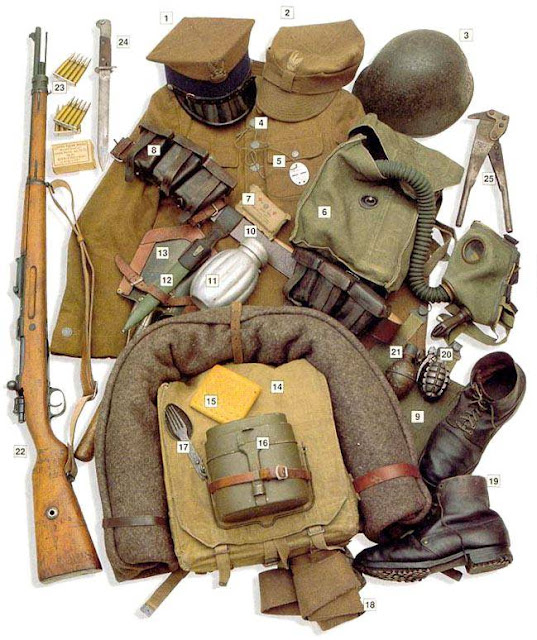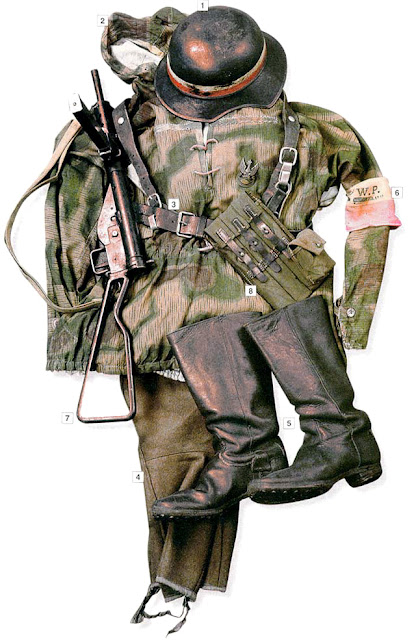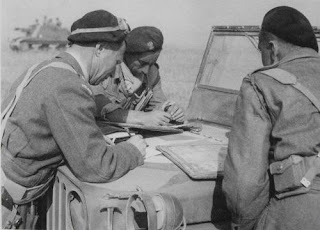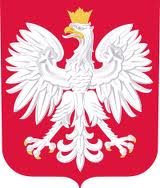POLISH UNIFORMS
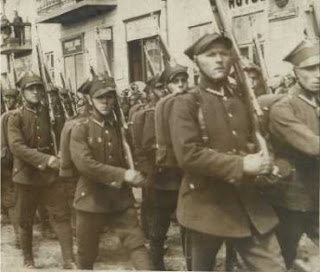 |
| POLISH INFANTRY WW2 |
Polish Infantry - Private (1939)
01 wz. 1939 "rogatywka" garrison cap
02 wz. 1937 "rogatywka" field cap
03 wz. 1937 steel helmet
04 wz. 1936 jacket
05 dog tag
06 WST wz. 1932 gas mask in a tarpaulin bag
07 personal dressing
08 leather ammo pouches
09 wz. 1933 breadbag
10 leather main belt
11 wz. 1938 canteen
12 wz. 1928 bayonet cover
13 folding shovel in a leather cover
14 wz. 1933 backpack with blanket
15 standard army biscuit
16 wz. 1931 mess kit
 |
| Polish troops (just before WW2) note French gas mask canisters |
17 spoon + fork kit
18 owijacze - belts of cloth used instead of socks
19 boots
20 GR-31 grenade - frag
21 GR-31 grenade - concussion
22 7,92 mm Mauser 1898a rifle
23 7,92 mm ammo clips
24 wz.1924 bayonet
25 wire cutting shears
 |
| Polish Infantry 1939 |
 |
| Polish mountain infantry - Parade of Podhale Rifles circa 1936 |
|
Polish Soldiers of Podhale Rifles Regiment
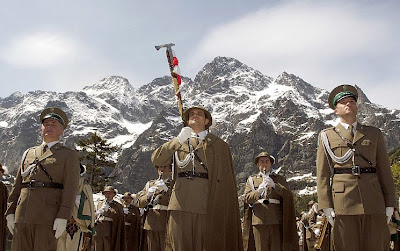 |
|
Polish Soldiers of the Podhale Rifles Regiment -background High Tatras Mountains
(notice the icepick?) |
 |
| Cloth insignia on field uniforms of Polish Podhale Rifles |
Es steht ein kleines, kleines Edelweiß
auf einer steilen, steilen Felsenhöh!
There is a small, small edelweiss
on a steep, steep rocky heights!
 |
| Highlander Cross badge worn on the collars of the Podhale Rifles Regiment until 1945 |
The traditional symbols of the Podhale Rifles regiment are the edelweiss and the Mountain Cross, the latter which has been part of the folk culture of the Polish mountain regions. It has no relation whatsoever to the Nazi swastikas of the NSDAP. In fact the Mountain Cross pre-dates the rise of the Nazi party.
 |
| Franciszek Kosibor in his uniform of Podhale Rifles-1939 Defensive War |
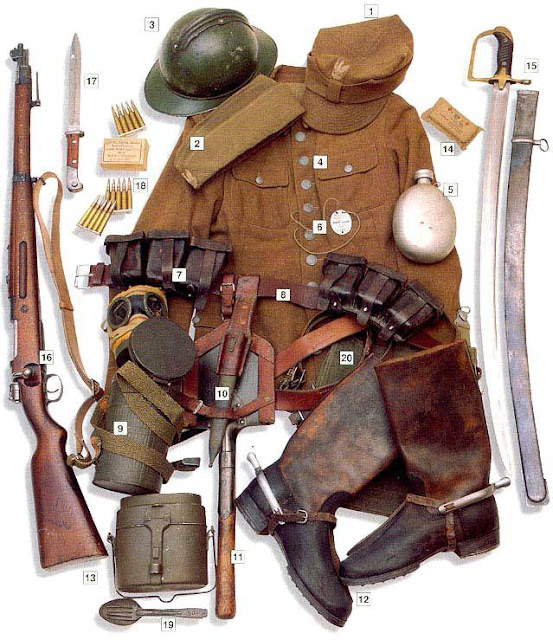
Polish Uhlan (1939)
01 wz. 1937 "rogatywka" field cap
02 wz. 1932 forage cap
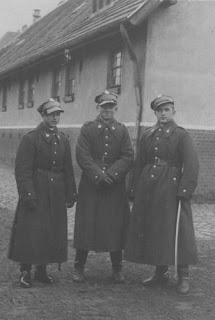 |
| Polish Uhlan |
03 "Adrian" French steel helmet
04 wz. 1936 jacket
05 wz. 1931 canteen
06 dog tag
07 leather ammo pouches for Mauser ammo
08 main belt
09 RSC gas mask with canister
10 wz. 1924 bayonet cover
11 folding shovel in a leather cover
12 boots with spurs
13 wz. 1931 mess kit
14 personal dressing
15 wz. 1934 cavalry sabre
16 7,92mm Mauser 1898a rifle
17 wz. 1924 bayonet
18 7,92 mm ammo clips
19 fork + spoon kit
(Photo: Rogatywka with Polish coat of arms and pulkownik is the rank insignia of a Colonel.)
"Rogatywka" is the Polish name for an asymmetrical, peaked,four-pointed military cap. "Rog" is a derivative of the word and means "horn". No other army in the world has such a cap. There are two types of caps, the hardened version, indicated by "Mk.1935, is olive green with black peak and is worn in full gala uniforms; its rim color marks the unit type. The soft version was worn before WWII and during the period of the PRL, but was withdrawn after 1990. Unlike most military forces, Polish soldiers do not decorate their caps with military insignia, but rather with the Polish White Eagle, which is the Polish Coat of Arms. Rim colors have specific meanings as follows;
Navy blue – generals, mechanized troops, law corps and National Honour Guard
Orange – units dedicated to honor historical panzer troops, scouts
Dark green – rocket forces, artillery, anti-aircraft units
Black – engineering units, cadets
Cornflower – HQs, radio services
Cherry – medics
Scarlet – Military Police
Violet – chaplains
Yellow – headquarters, 1st Warsaw Mechanized Division, 1st Warsaw Armoured Division
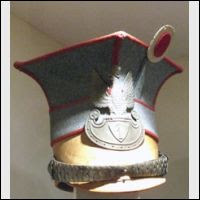 |
| Czapka of a wachtmeister of 1st Uhlan Regiment of Polish Legion |
CZAPKA is the Polish word for a cap. It was the headgear of 19th century Polish cavalry and was quite high and consisted of a four-pointed cap emblazoned with the regimental insignia on the front. Sometimes feathers or rosettes were added.
 |
| painting of 19th century Uhlan |
 |
| Polish Uhlans |
 |
| Polish Uhlans in riding formation 1939 Poland |

Polish Cavalry Officer (1939)
01 wz.1935 "rogatywka" garrison cap
 |
| Polish Cavalry Officer - Lt. Col Władysław Anders before 1939 |
02 wz.1923 forage cap
03 round cap of the 3rd Cavalry Regiment
04 wz.1937 "rogatywka" field cap
05 wz.1936 officers' garrison jacket,
insignia of the 6th Uhlan Regiment on collar tabs
06 memorial badge of the 21st Uhlan Regiment
07 dog tag
08 wz.1936 officers' field jacket
09 9mm wz.1935 "Vis" pistol
10 personal dressing
11 wz.1936 officers' main belt
12 leather holster for the wz.1935 pistol
13 officers' boots with spurs
14 officers' field bag, B-type
15 binoculars
16 strap for wz.1935 pistol
17 wz.1921/22 officers' sabre
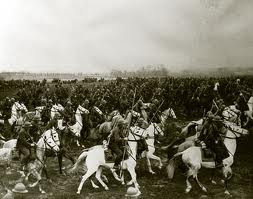 |
| Polish Cavalry - maneuvers before outbreak of WW2 |
Private, 1st Grenadier Division, Polish Army in France (1940)
 |
| Polish soldiers Camp Coetquidan, France1940 |
01 Model 1919 beret
02 Model 1918 French forage cap
03 French Model 1915 "Adrian" helmet
04 Polish "rogatywka" cap
05 ammo clip
06 ammo pack
07 leather webbing
08 Model 1916 ammo pouches
09 Model 03/14 main belt
10 8 mm Berthier 1892 carbine
11 Model 1938 privates' jacket
12 Model 1922 trousers
13 Model 1935 gas mask with leather bag
14 calendar
15 Model 1893 backpack
16 blanket
17 Model 1935 mess kit
18 Model 1935 cup
19 canteen
20 Model 1917 boots
 |
| Hieronim Dekutowski in Polish Army, France 1940 |
 |
| Hieronim Dekutowski- Polish Army WW2 |
Hieronim Dekutowski (noms de guerre "Zapora", "Odra", "Rezu", "Stary", "Henryk Zagon") was an Officer of the Polish Armed forces fighting in the Western front, and was a legendary Cichociemni and guerilla commander of the Armia Krajowa (Home Army). After the so-called "Soviet liberation" of Poland, Dekutowski went into hiding from the Soviet NKVD and Urząd Bezpieczeństwa (UB). On February 5, 1945, Abram Tauber, the Jewish commander of the UB in Chodel invited four members of the Polish underground to his headquarters. Tauber had previously been rescued from the Nazis by Polish AK units, and often sought refuge at the "Zapora" compound. But when the Polish men arrived at the station Tauber ordered them to be tied up and single-handedly shot them one after another.
In retaliation, Dekutowski attacked and destroyed the UB station in Chodel. The incident sparked an anti-Soviet uprising in the region.
 |
| General Sikorski inspects Polish troops Buzuluk, Russia Dec 1941 |
Private, Polish Army in the USSR (1941)
01 wz.1937 "rogatywka" field cap
02 Model 1937 overcoat
03 main belt
04 Model 1904 ammo pouches
05 felt boots
06 tarpaulin gloves
07 7,62 mm Tokarev SVT-40 rifle
 |
| Polish Army in USSR 1941-42 |
 |
| Polish Army parade at Buzułuku - USSR December 1941 |
 |
| Military exercise in Polish camp at Tockoje- Russia 1941-1942 |
 |
| General Anders and General Sikorski at reviewing stand inspecting Polish troops in USSR 1941 |
 |
| F/0 Miroslaw Feric -Ace Pilot |
Major, Polish Air Force in the UK (1940-45)
01 RAF officer's cap with Polish wz.1936 air force eagle
02 RAF officer's jacket, Polish major insignia on the collar
tabs, British Flight Lieutenant insignia on the sleeves.
03 Officers' trousers
04 Shoes
05 Briefcase
06 Silver Cross of the Virtuti Militari Cross
07 Infantry Officer's School Badge
08 Observer badge
09 British Navigator's wings
 |
| Polish Ace Pilots - Jan Zumbach on the left |
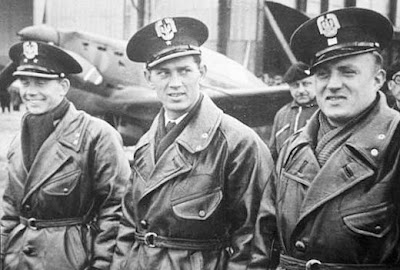 |
| Polish Pilots - France 1940 |
 |
Division 315 ‘Dębliński’ - Aug 14, 1942 Divisional Day (UK)
|
 |
| Polish 301 Bombing Division |
|
|
Photo: (Aug 20, 1940) Bramcote, UK. Officers inspecting Polish bombing squadrons in formation.
First row L-R; Lieutenant Colonel Roman Rudkowski-the first commanding officer of the Division 301, General Władysław Sikorski, King George VI, and Captain A. Davidson, Station Leader.
 |
| General Sikorski awards Silver Cross of Virtuti Militari to ace pilot Jan Zumbach Dec. 23, 1940 |
 |
| Polish Pilots (background is famous the PZL 37 Los Polish bomber ) |
 |
| Polish Ace Pilots - Kosciuszko Squadron-Battle of Britain 1940 |
 |
| GENERAL WLADYSLAW SIKORSKI |

 |
| Polish Soldiers Battalion Chlopskie |
|
|
|
|
Partisan of the Peasant Battalions (Bataliony Chlopskie) Poland 1942
01 wz.1937 "rogatywka" cap
02 jacket
03 trousers
04 boots
05 improvised armband
06 9 mm MP-40 SMG
Bataliony Chlopskie was a resistance movement and partisan organisation created in the mid 1940s by
the Stronnictwo Ludowe, (Polish People's Party), an agrarian political party. By 1944 it was partially integrated with the Armia Krajowa (Home Army). At its peak it had 175,000 members. Their first major action was during the Zamosc Uprising in 1942 when the Germans expelled the Poles, expropriated their farmland and and gave it to German settlers. After several major battles, the Germans stopped the expulsions.
 |
| Battalion Chlopskie "Odwet" |
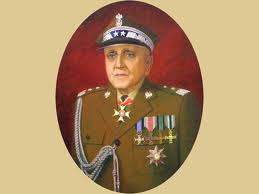 |
| Commander of Battalion Chlopskie Franciszek Kaminski |
Major, 1st Polish Armoured Division (UK) 1942-43
 |
| 1st Polish Armoured Div - Regimental Day |
01 British forage cap with a Polish wz.1940 military eagle and major's insignia
02 British officer's jacket
03 British trousers
04 Officer's belt
05 Shirt and Tie
06 Officers' boots
07 Black shoulder strap of 1st Armoured Div
08 1st Armoured Division Badge
09 Banners of 1st Independent HMG Batallion
10 1st HMG Batallion's honorary cord
Photo: Haddington 29.04.1943 The colour of the 10th Dragoons during the celebrations of the regimental day of the 10th Mounted Rifles.
 |
| July 1944 England 1st Polish AD in training |
 |
| (L) General Stanislaw Maczek |
 |
| General Stanislaw Maczek |

2nd Lt, 1st Infantry Division, Polish People's Army (USSR) 1943
 |
| 1st Polish (Peoples) Army Parade January 19, 1944 |
01 wz. 1937 field "rogatywka" cap
02 Model 1936 drill jacket, wz.1943 military
eagle on the buttons
03 Soviet breeches
04 Model 1935 officer's belt
05 synthetic leather holster for Nagant revolver
06 synthetic leather map pouch
07 leather boots
08 Adrianoy compass
09 binoculars
10 7,62 mm PPSh-41 SMG
11 decorations: Cross of the Valorous,
"Zasluzonym na Polu Chwaly" medal
 |
| Polish People's Army |
Polish soldiers of the 24th Self-Propelled Artillery Regiment.
(Vehicle may be an SU-85) Polish eagle moderated.
 |
| Polish soldiers of the 1st Tadeusz Kościuszko Infantry Division-Soviet backed July 28-30 1943 |
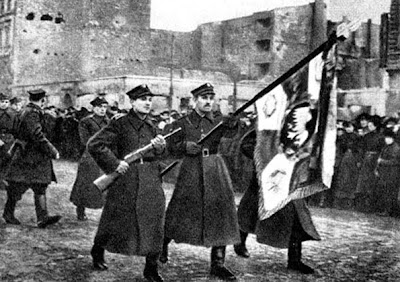 |
| Polish soldiers of the Soviet backed 1st Polish Army Jan 1945 so-called liberation of Warsaw |
 |
| Polish soldiers in Berlin May 1945 |
 |
| Zoska Battalion Warsaw Uprising |
Soldier of the Warsaw Uprising 1944
01 German "Gladiator" helmet
02 Wehrmacht sweatshirt in "Sumpftarnmuster" camp
03 Polish wz.1933 main belt
04 Polish breeches
05 German pre-1939 boots
06 Ak (Home Army) armband
07 9 mm Sten Mk II SMG
08 German ammo pouches for MP-38/40 mags
Photo of Zoska Battalion: Left to Right: Polish resistance fighters Wojciech Omyla, Juliusz Bogdan Deczkowski, and Tadeusz Milewski in captured German uniforms and Kar98k rifles, Warsaw, Poland, 5 Aug 1944.
 |
| Polish scout Warsaw Uprising |
 |
| Polish Scouts Armia Krajowa Warsaw Uprising 1944 |
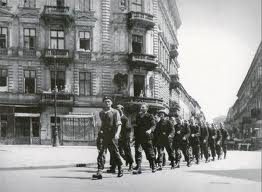 |
| Polish Insurgents column - Warsaw Uprising 1944 |
 |
Home Army - Warsaw Uprising
|
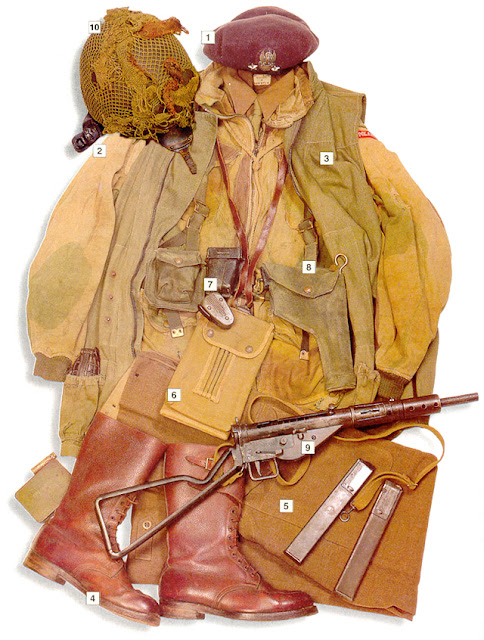
Lieutenant, 1st Polish Airborne Brigade, Arnhem 1944
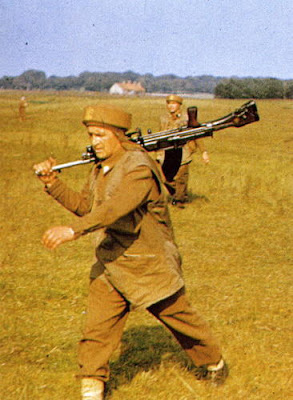 |
1st Polish Independent Parachute Brigade # 5
|
01 British beret with Polish eagle and rank insignia
02 "Denison smock" Mk I Jacket
03 "Oversmock" vest
04 Officers' boots
05 trousers from M37 Battle dress
06 British map pouch
07 captured German ammo pouch
used as a cover for a flashlight
08 webbing, belt and holster for
Enfield No2 revolver
09 9mm Sten Mk II SMG
10 AT Mk II airborne helmet
 |
| Standard 1st Polish Parachute Brigade |
Polish paratroopers during field exercises Scotland, Kingcraig circa 1943. These men were elite special operations troops who were called "Cichociemni" the dark and silent ones. Of 2,413 candidates, only 605 men were able to complete the training successfully, but 579 qualified for air missions.
 |
| Cichociemni in training (elite special operations Polish paratroopers) |
 |
| Paratroopers of the 1st Polish Independent Parachute Brigade - Market Garden |
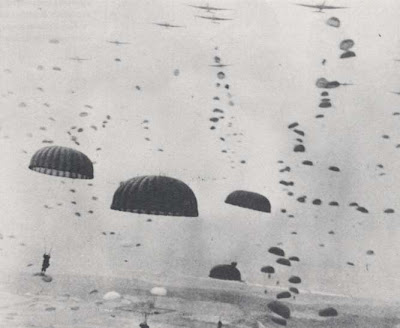 |
| Allied Paratroopers and 1st Polish Independent Parachute Brigade - Market Garden |
 |
| Field Marshall Montgomery inspect 1st Polish Independent Parachute Brigade |
 |
| General Stanislaw Sosabowski at Driel (Battle of Arnhem) |
General Stanislaw Sosabowski
Commander of the 1st Polish Independent Parachute Brigade

Private, 1st Polish Army, Kolberg March 1945
01 wz.1937 field "rogatywka" cap
02 Soviet M 1940 helmet with Polish wz.1943 military eagle
03 Model 1937 overcoat
 |
| Kolberg 1945 |
04 Model 1936 tarpaulin jacket, infantry banners on the collar tabs
05 M 1935 drill trousers
06 owijacze (leggings)
07 Soviet main belt
08 boots
09 German M-09 ammo pouches
10 pot
11 self-made spoon
12 7,62 Mosin 1891/30 rifle with bayonet
13 F-1 grenade
14 RPG-1 anti-tank grenade
15 oiler for the Mosin rifle
16 Maxim HMG ammo belt container
17 canteen
 |
| Polish soldiers - Kolberg 1945 |
Major, maintenance units of the 1st Polish Armoured Division (Germany 1945)
01 M 37/40 battle dress, maintenance units banners on the collar tabs
 |
| 1st Polish Armoured Division |
02 black shoulder strap of 1st Armoured Div
03 1st Arm Div badge
04 Silver Cross of the Virtuti Militari Cross
05 M 37 webbing
06 11,43 mm Colt M1911 pistol
07 Officers' boots
08 leather vest
09 drivers' gloves
10 armoured units' training helmet
11 AT Mk II motorcycle helmet
12 Mk II helmet
13 leggings
Photo at right: the 10th Mounted Rifles Regiment at Haddington 29.4.1943. Regimental Day
 |
| 2nd Polish Corps with Wojtek the cub bear |
2nd Lt., AAA of the 2nd Polish Corps (Italy 1945)
01 M40 battle dress, AAA colors of the collar tabs
02 American woollen shirt
03 M40 overcoat
04 M42 beret
05 boots
06 M37 breadbag
07 dog tags
08 ribbons of the Monte Cassino Cross
09 2nd Polish Corps Artillery memorial badge
10 Polish-English pocket dictionary
11 Propaganda leaflet
 |
| Official Emblem Wojtek |
Wojtek was more than a mascot. He grew up to become an official soldier of the 2nd Polish Corp - the 22nd Artillery Supply Company. He carried heavy loads of ammo for his unit.
 |
| Polish Soldiers 2nd Polish Corps Monte Cassino, Italy 1944 |
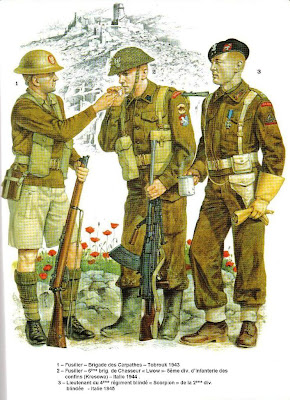 |
| An Illustration of soldiers of 2nd Polish Corps Monte Cassino Italy |
 |
| Soldiers of 2nd Polish Corps charging up Phantom Hill - Monte Cassino |
 |
| General Anders salutes soldiers of 2nd Polish Corps |
 |
| General Wladsylaw Anders - Commander of 2nd Polish Corps |






